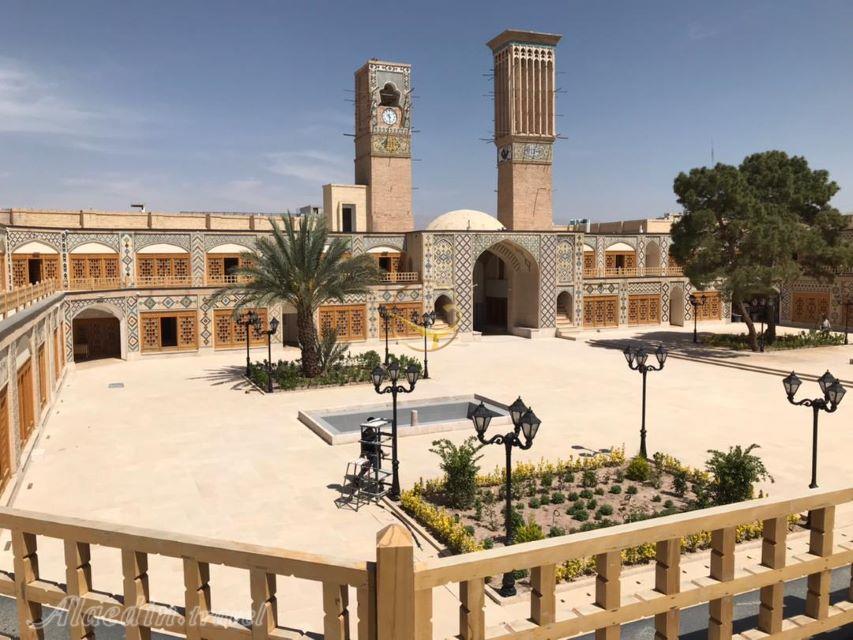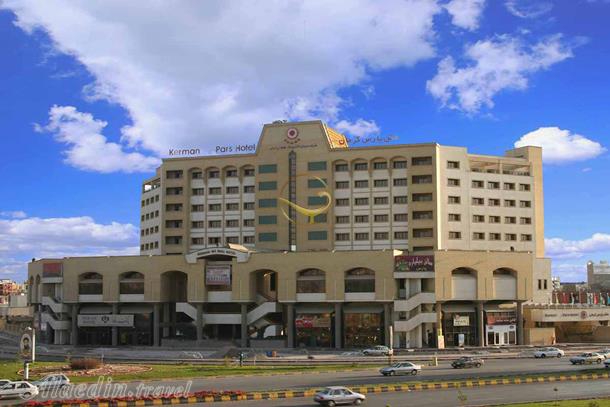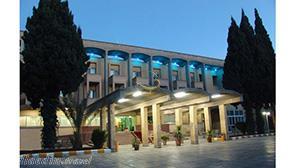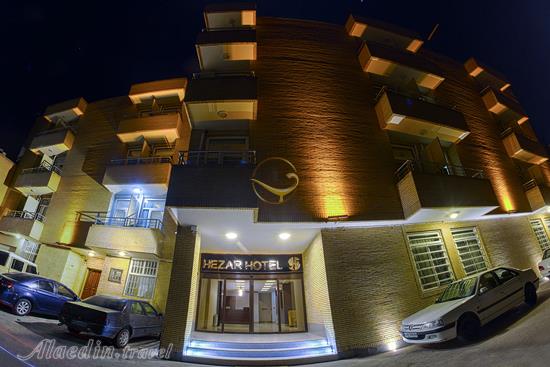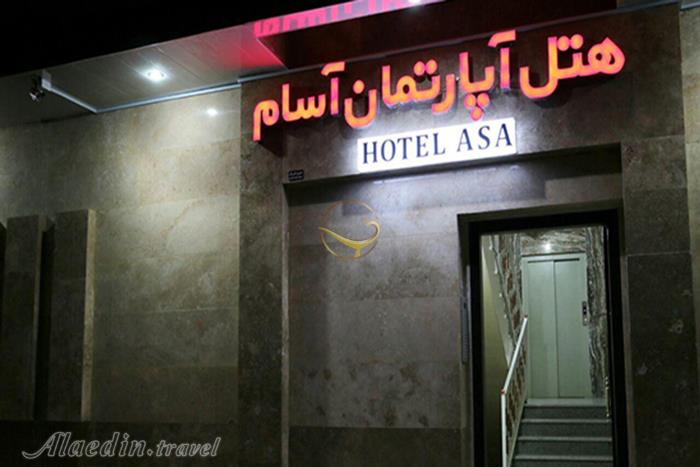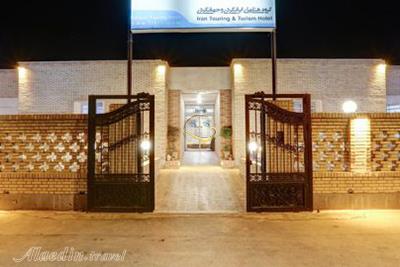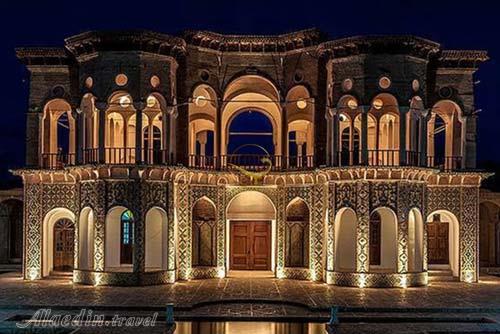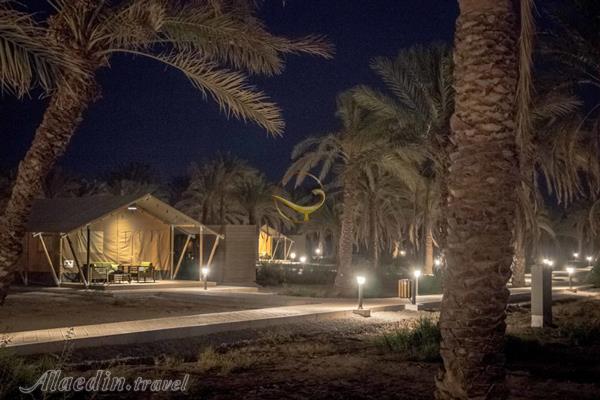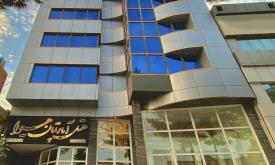Travel guide to a Jewel in the Heart of Desert, Kerman
The historic attractions of Kerman have changed this city into a desert and one of the most important tourist destinations in Iran. If you are one of the thousands of tourists who have a travel plan, read the travel guide to Kerman before embarking on a trip to learn more about the city. Here, in Alaedin Travel, we will tell you what you need to know about the desert city of Kerman, known as the city of Kariman. We hope that you will learn useful things for your visit to Kerman.
Geographical Location
Kerman is one of the metropolitan areas of Iran (about 13000 hectares) and the capital of Kerman province. It is the largest city in the southeastern region of Iran, and its provinces are Yazd, South Khorasan, Sistan and Baluchestan, Hormozgan and Fars. It is one of the five historic cities of Iran, which was called "Karmania" during the Achaemenid and Sasanian periods. Its other old names are Kajaran, Gavashir and Botia.
Weather
The bigness and depths of Kerman have caused it to have a variety of weather conditions. In the north, northwest and central part of this province, there is a dry and temperate climate, and in the south-east it is warm and humid. In Kerman province, you will see different weather in different areas because it is a huge province. Kerman is the third highest city in Iran being 1756 meters above sea level. As a result, the climate is clean; air pollution in Kerman is very low. The city is located next to Sahib Al-Zaman Mountain and desert plain of Mahan, resulting in very cold nights. In summers, it has hot days and cool nights. The winters are the same as in the summer, with the difference that the temperature of the air is lower throughout the day. The high altitude of this city has left its climate cooler than other desert cities such as Yazd, Isfahan, Qom.
Best Time to Travel
In general, the best time to travel to Kerman is from early May to late June and from early September (10th of September) to early October. During this month, the average temperature of the city is about 21 degrees Celsius and does not exceed 31 degrees. The best time for the Desert going is from early December to early March.
Tourist Attractions
Maybe it's interesting to know that Kerman Province has about 7,000 historical attractions, so if you are interested in historical monuments, this city with its many historical monuments is a great place for your trip. Alaedin Travel introduces some of the historical monuments of Kerman province:
Ganjali Khan Complex
The collection, which is on the list of national works of Iran, consists of several monuments dating back to Safavid times. Around the Ganjali Khan's rectangular square you can see a lot of historical attractions, all of which are part of Ganjali Khan's collection. Ganjali Khan Market is as attractive as other traditional Iranian markets, and even if you do not intend to buy anything, we suggest you to explore it. Ganjali Khan Bath with its beautiful architecture has become an ethnographic museum and visiting it is very enjoyable. Ganjali Khan Mint also has become a coin museum today and you can see a collection of old coins.
Vakil Bath
The Vakil Bath was built in 1280 and is inspired by the works of Zandieh and Ghajari in its architecture. This bath is a traditional tea house today where you can try a variety of Kermani beverages.
Jabaliyeh Dome
This rock dome, which is the only stone construction of Kerman, was built during the Sassanid era and should be visited in the east of Kerman near Pardisan Park. Within this building, there is a stone museum that is very interesting to visit.
Arg of Bam
It is true that most parts of this magnificent brick building were destroyed in the 2003 earthquake but it is under reconstruction these days and can still be visited. This citadel is the largest brick building in the world and you can visit it if you go to Bam.
Shazdeh Garden in Mahan
This garden is located on the UNESCO World Heritage list and should go to 2 km from Mahan to visit it. The Shazdeh Garden was built during the Qajar period and its information has been translated into 35 languages.
Local Foods
Kashk Kale Joosh
This meal is one of the Kerman's local foods and oil, mint, garlic and onion are the ingredients and is usually eaten with walnuts and bread.
Abgoosht Kermani
To prepare this dish, rice, tomato paste, salt, turmeric, dried lemon, onion, potatoes, dried apricots, dried quince, beans, lamb, peas and tarragon and dried parsley are used.
Zire Polo
To each Kerman restaurant you go, we suggest instead of a simple rice dish, order a cumin rice. Cumin Polo is one of the original and traditional Kerman dishes that has its own fans. Nonetheless, its extraordinary flavor and aroma is very appetizing next to any stew. Its main ingredients are rice, cumin, oil and salt. It is very easy to prepare Cumin Polo like any other Polo you should ass cumin when you are adding salt.
Boz Ghormeh
One of the most delicious foods Kermani, which has a strange name, is Boz Ghormeh. Come along with a travel guide to Kerman to get acquainted with one of Kermani's delicious food. This food has been named because of the presence of meat in its basic ingredients. This food is made up of ingredients such as chickpea, onion, garlic, meat, saffron, mint, salt, pepper and turmeric. Due to the fact that you must soak beans in water overnight, its bakeing takes time. The people of Kerman serve this traditional dish with bread. You will find this meal in the menu of all Kerman restaurants.
Souvenirs
Different cookies such as Kolompe, Komaj, Ghottab and Ghaot are the sweet things from Kerman that would add to the joy of this trip. Cumin, pistachio, walnut and date are the other edibles famous from this city. You could also buy some handcrafts such as pPatteh Duzi, Ajidej Duzi and Gabr Duzi.
Wish you a perfect trip to Kerman.
 Bus
:
Available
Bus
:
Available
